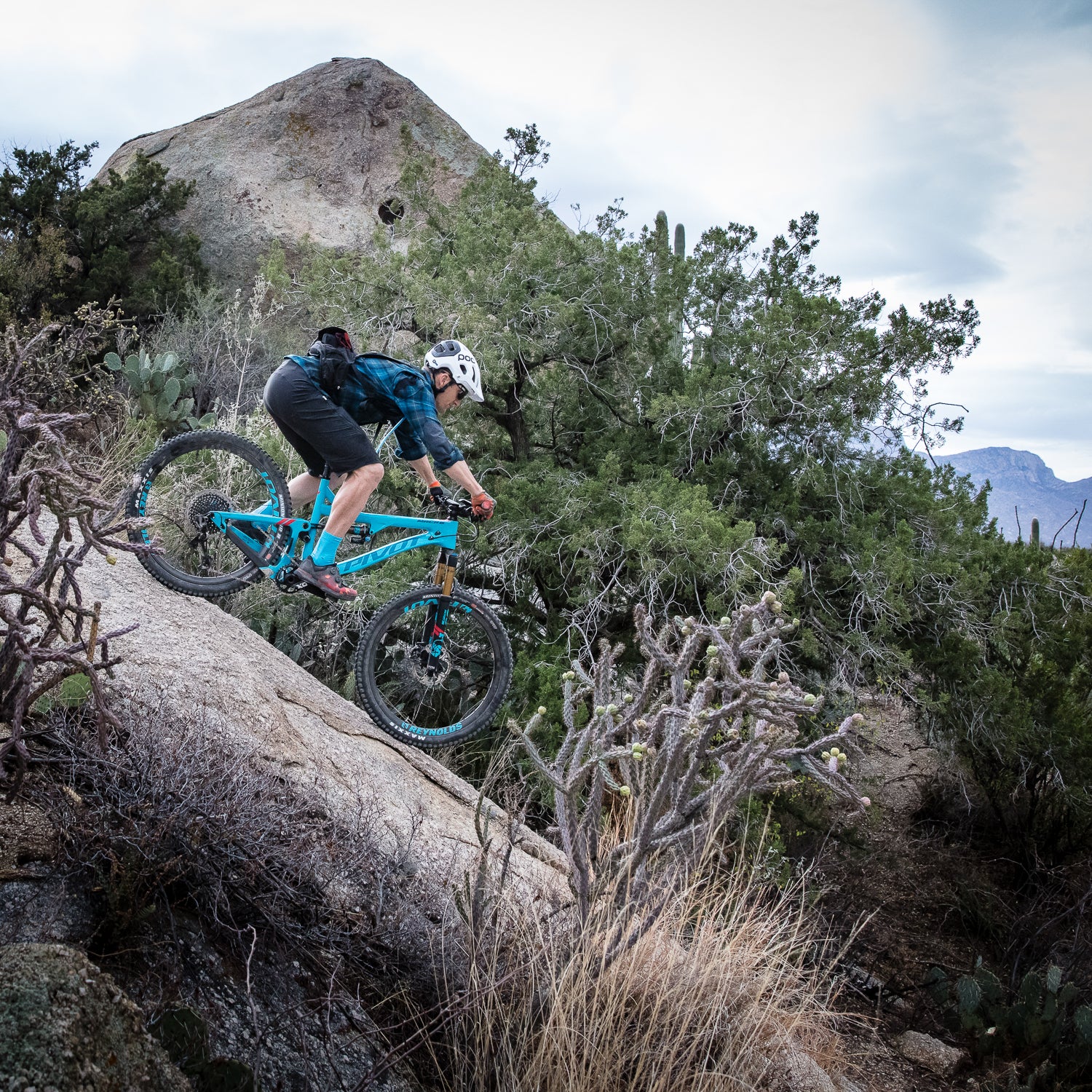Bike coverage for �����ԹϺ��� and the Summer Buyer’s Guide is largely a democratic process. I put a dozen testers on the year’s crop of new bikes, and the bikes that a majority of riders preferred are the ones we recommend. But those picks don’t always perfectly align with my tastes. Here are a few models that I rode and loved but, for one reason or another (too niche, liked by some riders but not others), just missed the cut. That doesn’t mean these aren’t great rides though.
Pivot Mach 6 Carbon (From $5,200; $8,400 as Tested)
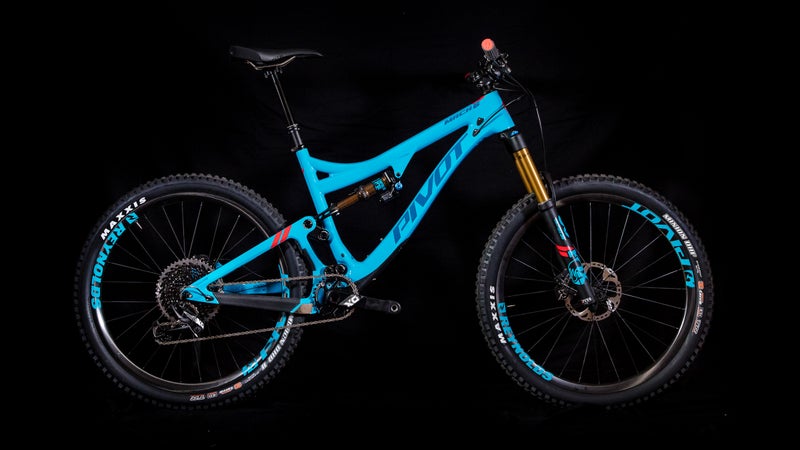
Enduro 27.5ers comprised over 20 percent of our test fleet, making the category one of the fastest growing this year. , which gets a longer front center and lower stance than the previous edition for even more aggressive handling, was one of my favorites. Two things set this bike apart. First, Pivot’s use of the DWLink suspension makes the Mach 6 climb exceptionally well for a 155-millimeter trail shredder. And second, the company’s attention to detail—super-clean cable routings, ports to accommodate any and every build you might ever want, and rubberized frame protection on the down tube and bottom bracket—is maybe the finest on the market. The Fox suspension, including DPX2 piggyback shock and 160-millimeter 36 Factory fork, proved both stout and silky. And the lightweight Reynolds Enduro carbon wheels took a nasty beating but came away unscathed. If you favor big drops, sketchy terrain, bike parks, and shuttling over long days of pedaling, you cannot go wrong with this burly bike. Oh yeah, it’s also the best-looking Pivot I’ve ever seen and probably the sexiest mountain bike in the entire test.
Guerrilla Gravity Trail Pistol (From $2,995; $5,695 as Tested)
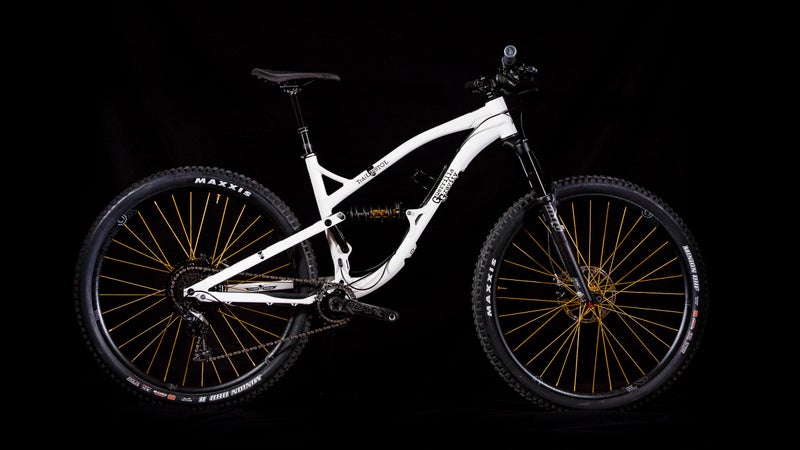
Based in Denver, Colorado, where all of this company’s rides are designed, built, and assembled, Guerrilla Gravity is reviving the idea that small-scale, American-made bikes are legit by offering value, customization, and—most important—a great ride. Most of the company’s bikes are longer-travel and downhill-oriented, a design ethos that obviously influences slack head angle (66.6 degrees), steep seat angle, short chainstays (429 millimeters), and long reach. Taken together, it makes for a bike that feels plenty efficient yet confident enough to get rowdy. Guerrilla Gravity sells three spec builds of the , or you can pick and choose exactly what you want, including paint color and stickers. The bike the company built for us couldn’t have been more spot-on: The 130-millimeter MRP Ribbon fork proved infinitely adjustable and incredibly supple in the small bumps. The Cane Creek DBCoil IL shock made of the most stable ride of any bike in the test. The Industry 9 Trail270 wheels are as appealing and high-performance as alloy hoops get. And unlike some of the more niche machines out there, this is a bike I would ride on any trail in any part of the world in every condition.
Salsa Deadwood (From $3,800; $6,000 as Tested)
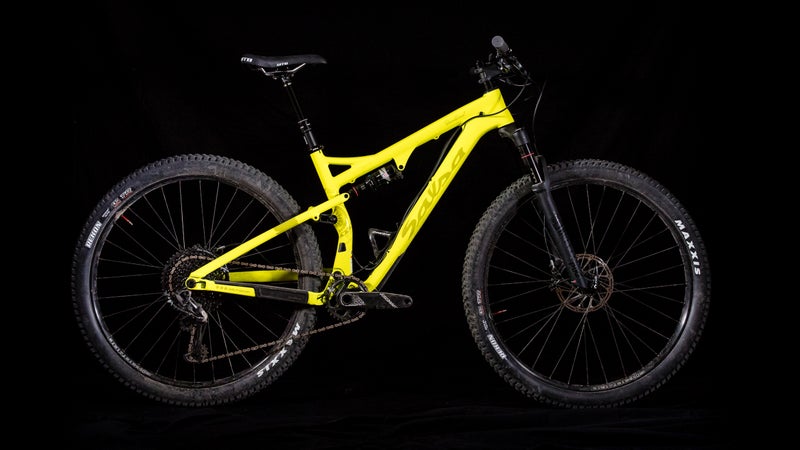
Thanks to its monster wheels and big-truck feel, was either adored or hated by testers, with very few in between. For me, it was one of the standouts of the test, partly because it is the only full-suspension 29+ bike on the market. Those huge hoops make this bike plow like a steamroller. And I think it’s perfect for the desert Southwest—it pushes through rocky chunder, grips like Velcro on loose climbs, and floats when trails turn sandy, which is frequent. This year’s model keeps the short, 91-millimeter rear travel of the previous edition but gets a beefier 120-millimeter fork for a slacker front end and more assertive riding. I did regret that Salsa downgraded from full three-inch rubber last year to 2.6-inch Maxxis Rekons. These tires are some of my favorite, but I’d rather have the bigger variety since full plus-size is what sets the Deadwood apart. With a pretty long wheelbase and a somewhat heavy build (29.5 pounds), this bike isn’t the most playful and won’t appeal to everyone. But I enjoyed smashing around in the backcountry with it.
Look 795 Light RS ($8,500 as Tested)

Like the Salsa, won me over not only for its composed ride but also because it is so different than any other bike on the market. The tubes are all airfoil shaped, but the aerodynamic gains don’t stop there, thanks to Look’s innovative integration. The top tube extends straight into the proprietary stem, which can be adjusted from minus 13 degrees all the way up to 17 degrees to preserve the bike’s sleek lines. The Zed 3 Crank is constructed as one piece, which makes for exceptional stiffness and some of the best power transfer I’ve felt. (The flip chip at the pedals to adjust the crank between 170 and 175 millimeters is also a neat little bit of design.) Finally, the integrated seat mast makes for clean airflow, but Look has also built in elastomers that help smooth the ride. All together, it makes for a powerful-feeling bike that’s best on rolling terrain and confident descending, without the harsh edge of some of the competition. The truth is you can get an aero bike that’s lighter and cheaper from some of the bigger manufacturers, but I liked this as much as any of them for its distinctiveness.
Breadwinner G-Road ($6,395)
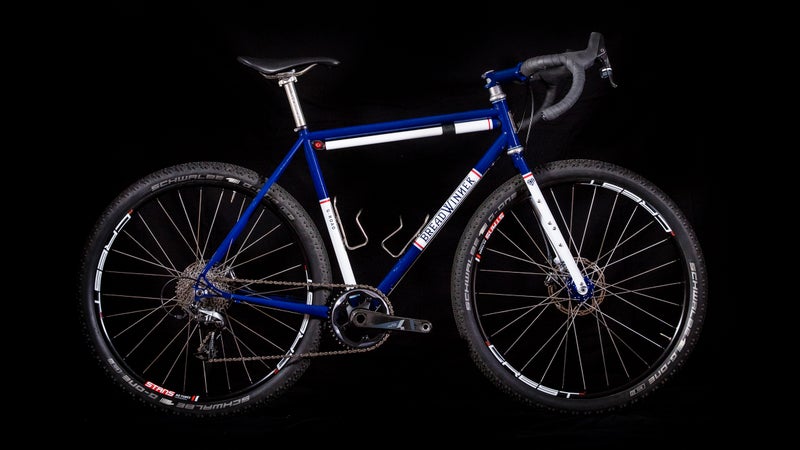
(G for gravel) was another polarizing bike among testers. To understand how a steel 650B road bike can be this costly—one of the big put-offs for some testers—you must appreciate the heritage of Breadwinner, which is a collaboration between Ira Ryan and Tony Pereira, two of the most renowned men in the hand-built bike world. Each of the company’s bikes, including every G-Road, is custom built and finished to a client’s riding style, preferences, and geometry. Apart from its bespoke nature, the G-Road comes with 2.1-inch Schwalbe G-One Bite tires on Stan’s Crest MK3 rims, wide flaring Thomson Dirt Drop bars, front and rear thru-axles, and a 1x SRAM Force group set, including the company’s hydraulic disc brakes, all of which suggest taking on very burly terrain. The myriad braze-ons on the Igle segmented fork and the Breadwinner rear dropout hint at the big loads this bike is built to carry. The G-Road was happiest muscling along the fire roads and dirt corduroy outlying Tucson, where the relatively low bottom bracket lent a rooted, super-stable ride. It did OK on trails, too, though the steering seemed slow for really quick stuff. As such, this is a pretty niche machine, best for those who like their roads chunky and their backcountry adventures big—and want the most beautiful bike available for the job.
Cervélo R3 Disc ($5,200)
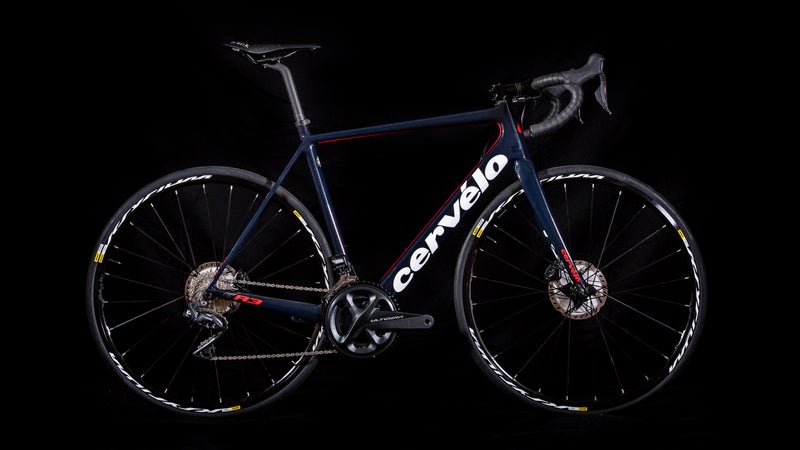
The Canadian company has had a bit of a reputation for producing somewhat expensive, slightly traditional (some would say stuffy) bikes over the years, so it’s nice to see Cervélo bring disc brakes to the venerable and longstanding R Series. Unless you choose the safety vest yellow colorway—indeed a bold departure for Cervélo—there’s nothing showy or flashy about . Instead, it’s just a nicely built disc roadie with great parts (full Ultegra Di2) and fleshed-out geometry. Every time I climbed aboard this bike at the test, I felt as though I was settling into a bike I’d been riding for years—that’s how comfy it is. It’s not the lightest (17.5 pounds) nor the fastest, but it just feels good on whatever terrain you throw at it. Turnover is quick when climbing out of the saddle, handling is sharp but not nervous, and descending is so stable that I felt totally fine taking my hands off the bars for water on the 50 mph descent of Mount Lemmon.


